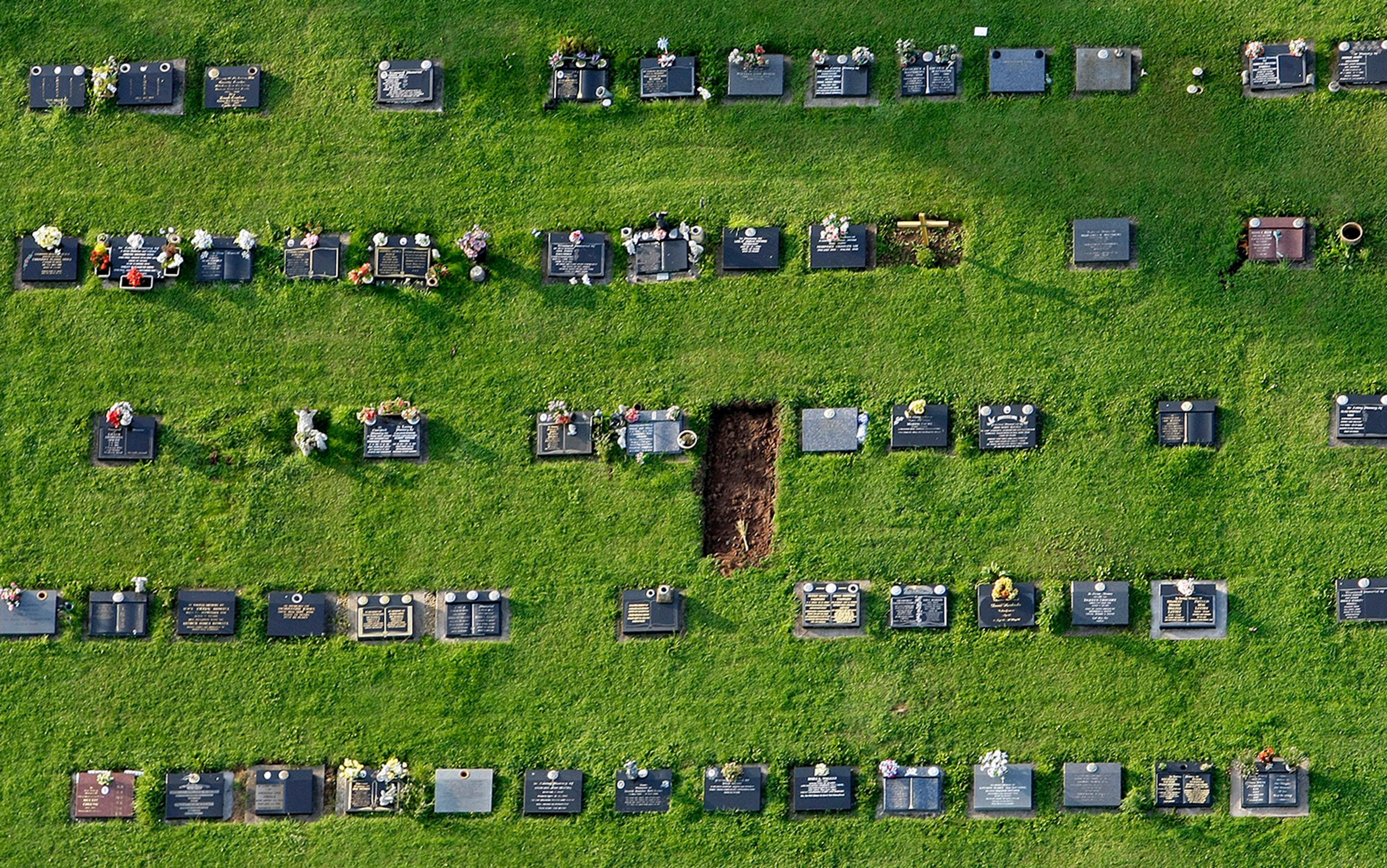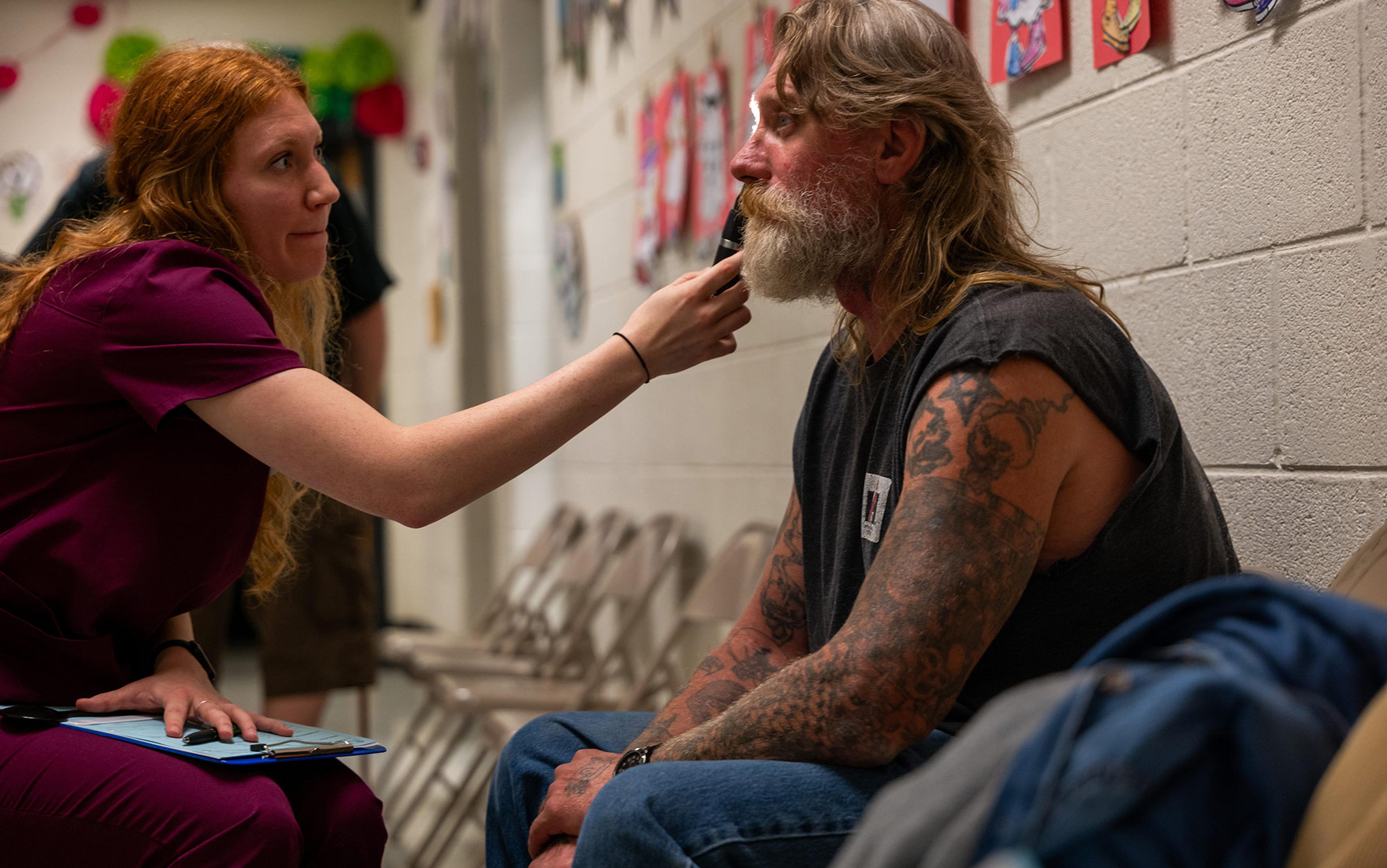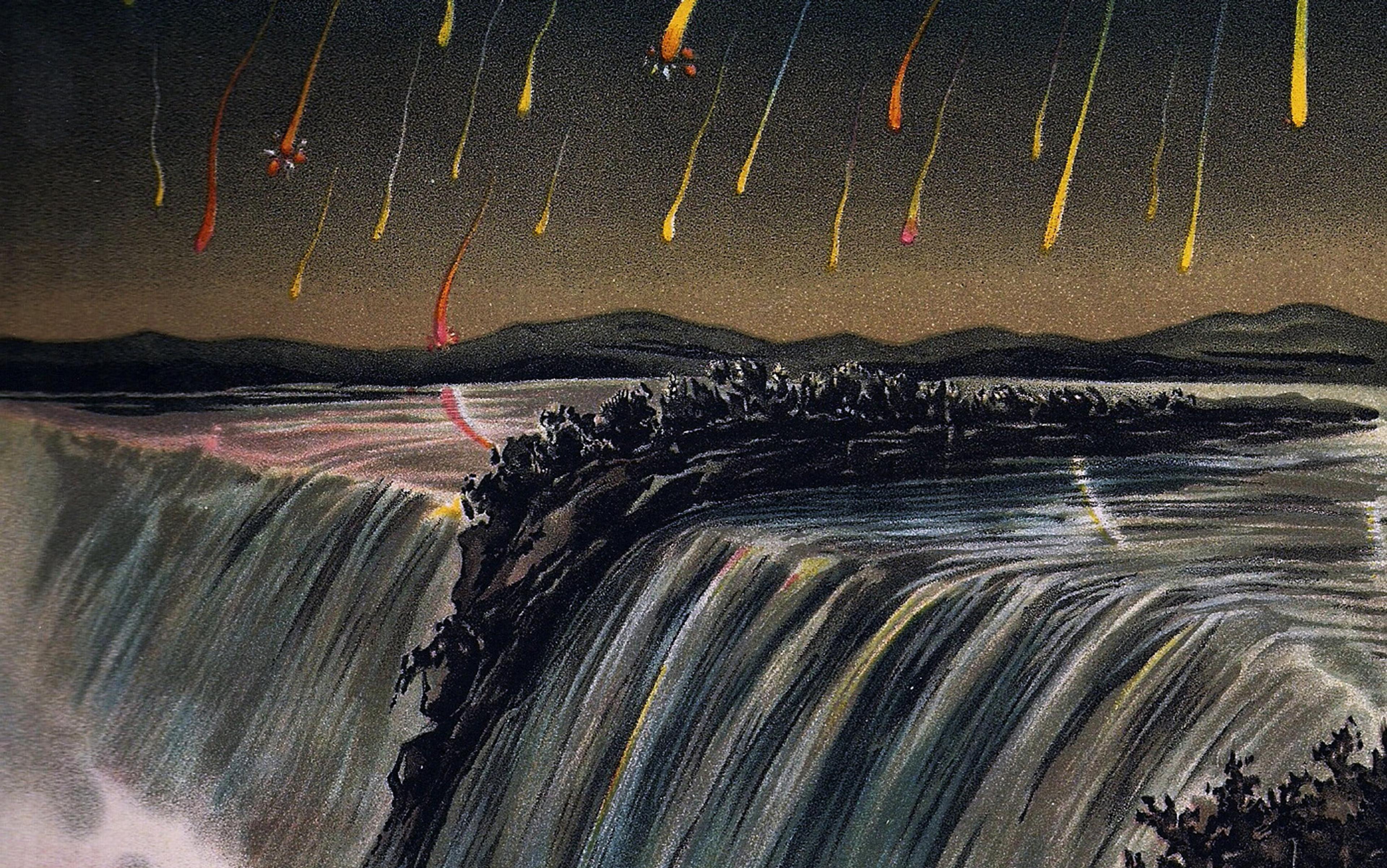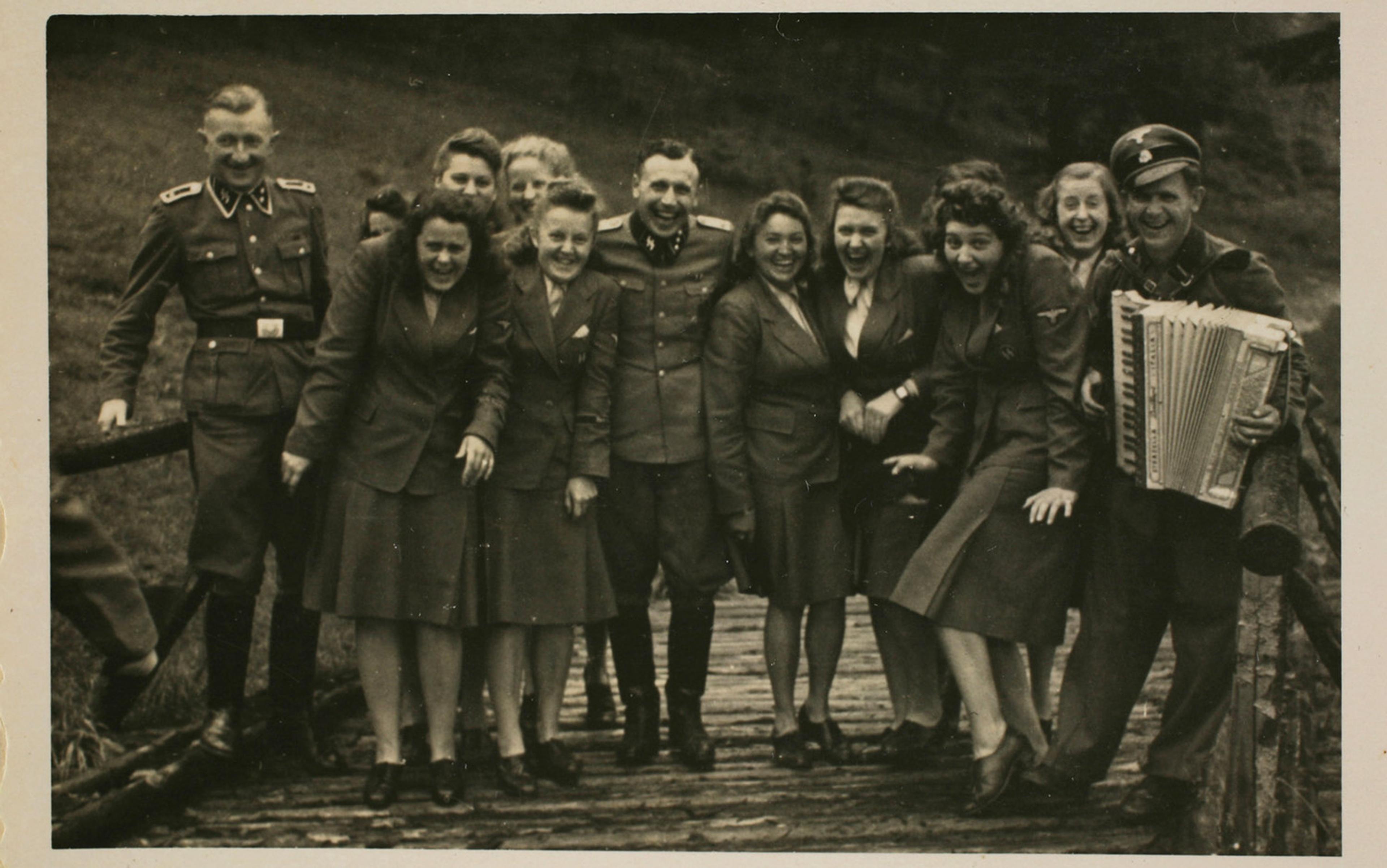Many people think consciously about their mortality only once in a blue moon. Maybe if an odd mole appears. Or after a close call in the car. Or when they read about the death of a celebrity their age. Maybe it’s in the middle of the night, when they can’t get back to sleep and the reality of their inevitable ending sinks in. I, on the other hand, have been thinking about my own mortality, and indeed everyone’s, most of my professional career. You might guess that I’m a mortician, or a coroner, or maybe an oncologist. But actually, I’m a social psychologist and my focus has been on trying to understand human social behaviour. What does mortality have to do with understanding human behaviour? More than most of us think.
I spent my early childhood in a working-class Italian neighbourhood in the South Bronx in New York City. Many African-American families were then moving into the area. At the time, I remember having two observations about people that bugged me: their pride and their prejudice. Everyone around me seemed to think they were right about everything – smarter and more moral than anyone else. And the people in my neighbourhood seemed to have something against those who had darker skin than they did. I thought about these tendencies occasionally, though they didn’t seem to concern people around me. Then, in 12th grade, I was assigned Jonathan Swift’s literary satire Gulliver’s Travels (1726), and I was shocked to find that here, finally, was someone who saw humans the way I did. And someone who died back in 1745 at that.
This renewed my interest in these human proclivities, and so I decided to major in psychology as an undergrad at the University of Pennsylvania to learn more. Then I went to grad school in social psychology at the University of Kansas and, with my fellow students Sheldon Solomon and Tom Pyszczynski, I began studying people’s prejudices, and their ways of protecting their pride, their self-esteem. We learned that people engage in all sorts of mental gymnastics in order to feel good about themselves and their group. People who don’t succeed in doing so function poorly and experience anxiety and depression. But our studies left us with no answers as to why people are so invested in self-esteem and the superiority of their own group. It seemed to just be taken as a given.
So we looked outside our field and discovered the works of the American cultural anthropologist Ernest Becker (1924-74). He gave us some answers in his book The Denial of Death (1973), which won the Pulitzer Prize for nonfiction in 1974, and counts Bill Clinton and Woody Allen among its many fans. Becker takes the reader to a familiar, yet rarely visited place – where one is faced with what being mortal really means: ‘Man … is a symbolic self, a creature with a name, a life history,’ Becker wrote, ‘and yet he goes back into the ground a few feet in order blindly and dumbly to rot and disappear forever.’
His book forces us to really consider our own inevitable death, consciously, in a way we might not have since that fact first dawned on us. It’s not a fun read. But from this consideration of mortality, Becker builds a case for the fear of death as a pervasive influence on human behaviour. He argues that we all fear death and we would be perpetually terrified if we didn’t have a way to deny, escape or transcend it. The ancient philosophers Epicurus and Lucretius recognised the role of the fear of death in human endeavours. But they argued that we would lead better lives if we realised that it’s not logical to fear death because, if it is the end, then it will be nothing. We don’t fear not existing before we were born, so why should we fear not existing after we are dead?
The problem is that we are not logical beings. We are animals. And, like other animal species, we are biologically predisposed in many ways to continue living. If someone tries to suffocate you with a pillow, you struggle to breathe. If a car comes toward you, you dive out of the way. Becker used the example of people on a commercial airliner. If there is a sudden loud noise or the plane begins a sudden descent, everyone onboard feels terror and panic. So we have in our limbic system a fear of death and desire to avert it at all costs. As do, probably, many species of animals.
Literal and symbolic immortality are fundamental bases of our psychological security
But what’s different about us humans is that we also have a cerebral cortex with frontal lobes that allows us to realise that death could come at any time for a wide range of reasons that we can neither predict nor control. And furthermore, it’s going to happen, sooner or later. So how are we able to function with equanimity knowing this, instead of cowering in a corner paralysed by terror? Becker proposed that, as our ancestors became aware of the predicament of being mortal, they developed cultural worldviews that could allow them to believe that death is not the end of our existence, that in some way they will continue beyond their physical deaths, and the worldviews that have evolved since then have continued to promote this view.
The most obvious way that worldviews provide this hope is through belief in an immortal soul that lives on after our body dies. The oldest burial sites and ancient artifacts suggest such a belief in an afterlife goes back more than 50,000 years. We call that ‘literal immortality’. The other major way is through a sense that the symbols of us – the things that represent us – will continue on after our physical deaths: our nation, our offspring, our contributions to the world through teaching, art, science and the causes we identify with. We call this ‘symbolic immortality’. The first known written story, The Epic of Gilgamesh, attests to how central these concerns have been to our species. Gilgamesh becomes obsessed with death and how to avert it. He first tries to appease the gods for immortality, then he tries to find a plant that will let him never die, and finally settles for symbolic immortality by being remembered for doing great deeds and building great monuments – and he actually achieved that through the tablets that conveyed his story.
Literal and symbolic immortality are fundamental bases of our psychological security, but they depend on two things. First, we must maintain faith in a culturally based view of the world that provides a basis for believing in the possibilities of literal and/or symbolic immortality. Second, we must believe that we are valued contributors to this world so that we qualify for these forms of transcending our physical deaths. I call these two components of effective terror management. People live out their lives largely imbedded in a symbolic world of meaning and value in which they can believe they are of enduring significance and, as long as they maintain belief in that world and their significance, they can function with psychological equanimity. However, if either of these beliefs is threatened, defences must be marshalled or death anxiety will percolate to the surface.
How, then, do these ideas inform pride and prejudice? From the perspective of this terror management theory, the problems of prejudice and intergroup conflict arise because groups that have a worldview different from one’s own are explicitly or implicitly suggesting that our own basis for feeling psychologically secure is wrong. To alleviate that threat, we must either derogate those others as stupid or evil, try to convince them that ours is the right worldview, or get rid of them. How many times over the course of history have we seen those impulses played out to great suffering and tragedy?
What about our pride? Striving for and defending one’s self-esteem are efforts to maintain the belief that one is a valued contributor to the world that our culture teaches us to believe in. As long as we believe we are significant contributors to this world, we have that sense of immortality and can function securely in the world. How do we come to be imbedded in these cultural belief systems and driven to be valued parts of them? This is a central function of the socialisation process, which Becker described beautifully in his book The Birth and Death of Meaning (1962).
The human newborn is one of the most helpless and dependent of all living creatures. Its survival and relief of distress depend on the love and protection of the parents. But as the child moves into toddlerhood, that love and protection become increasingly dependent on being a good little girl or boy. Be gentle with the cat, pee in the toilet. Over time, the child has to internalise a remarkable number of rules and values to stay in the good graces of the seemingly omnipotent parents, the only security base the small child has. So being good is the basis for feeling secure. And being bad is a precarious, scary thing, as it’s associated with possible loss of love and threat of punishment.
Being good is based on what is learned from the parents, which reflects the cultural worldview the parents themselves were taught. And so we strive for self-esteem because it tells us that we are good worthy people and therefore loved and protected. Of course, as we develop cognitively, we learn that there are threats too big for our parents, and that they are not omnipotent. But they have taught us bigger things in which we can believe, and therefore we shift our primary bases of security to our god, our nation, our family line, science, humanity. As adults, we still need that self-esteem, that sense of significance, to feel secure, but we get it by feeling like worthy contributors to those larger entities we have learned to believe in. Doing so allows us to feel that we will continue on, as valued Christians, artists, scientists, Australians, and so forth.
It’s a big theory, with psychoanalytic roots, that seems to account for a lot of human behaviour
Having been convinced by Becker that awareness of mortality plays a significant role in human behaviour, we formalised these ideas into terror management theory to introduce them into psychological science. We submitted a paper to the American Psychologist journal, explaining the theory and how it can account for so much we know from anthropology, archaeology, history, as well as psychology. Neither the editors nor the reviewers were pleased. One review was just a sentence long: ‘I have no doubt that this would be of no interest to any psychologist, living or dead.’ (You’d think at least dead ones would be interested!)
Such comments gave no clues on what the reviewers disliked, but our guess was that their reactions were due to two aspects of the theory: first, that it concerns a scary topic, the inevitability of death; and second, that it’s a big theory, with psychoanalytic roots, that seems to help account for a lot of aspects of human behaviour. Ever since the reaction against Sigmund Freud in the 1950s, academic psychologists have been suspicious of big theories, accusing them of being unfalsifiable, or unscientific. After parrying with the journal about the lack of legitimate critiques of the paper, one beleaguered editor was kind enough to actually engage by telling us that, although these ideas might have merit, we would have to gather new evidence for them to attain ‘valid currency’ in the field.
We never bought into the falsifiability argument regarding any theory. It’s always a matter of being able to derive hypotheses and developing methods to test them. But getting an empirical handle on this big theory wasn’t easy. We came up with three basic hypotheses that have now been supported by more than 1,000 published studies across a wide range of domains, including prejudice, nationalism, political preferences, economics, art, marketing, consumerism, environmentalism, legal decisionmaking, aggression, athletic achievement, romantic relationships, mental health, and physical health. Let’s focus on the mortality salience hypothesis.
If concerns about mortality are managed by faith in one’s worldview and one’s value in that world, then maybe reminding people of their mortality – making mortality salient – would intensify their defence of their worldview and their efforts to live up to its values. We first tested this mortality salience hypothesis by asking municipal court judges to set bond for an alleged prostitute in a hypothetical case that included the same kind of information usually available to make such judgments. If the bond is small, the woman could be released from jail until her trial, but if it’s high, she might have to remain in jail until her court date. Our reasoning was that it’s the judges’ job to make sure that violators of worldview values are punished, so they should be especially punitive if first reminded of their mortality. So, for half the cases that we gave the judges, we included a short questionnaire with two items asking them about their mortality, placed prior to their consideration of the case. Supporting our hypothesis, those judges reminded of their mortality assigned an average bond of $455, whereas those not thus reminded set a $50 average bond.
After that first study, we conducted a series of follow-ups to test additional hypotheses. We found that the effect of mortality reminders always depends on the individual’s worldview. So, for people who don’t believe that prostitution should be illegal, mortality reminders don’t increase the size of the bond they choose for an alleged prostitute. We also found that thinking of other negative potential events – such as physical pain, failure or being socially rejected – doesn’t create similar effects. And, importantly, thinking about death doesn’t simply make people negative: it also leads them to want a bigger reward for someone who helps the police capture a criminal.
We then wanted to see if making mortality salient would also lead to an increased defence of one’s country, and if it leads to bias against those who subscribe to a different worldview. Many studies have found both effects to be true. A number have shown that reminders of mortality increase liking for someone who praises their country, and increase negative reactions and even aggression against someone who criticises it. Studies have also found this kind of nationalism outside the lab in contexts that bring death to mind. In one study, Germans interviewed near a cemetery preferred the German mark to the euro, whereas Germans interviewed near retail shops showed no such preference. In addition, a variety of studies have shown increased liking for those in one’s own group and dislike for those in a different group. The first such study showed that Christian students who read about a fellow Christian student and a Jewish student showed no bias in a control condition but a strong preference for the Christian over the Jew if they had first been reminded of their own mortality.
When thinking consciously about death, people will use a higher-protection sunscreen
Studies have also shown that mortality salience increases striving for self-worth. As examples, people reminded of their death who base some of their self-worth on, say, driving skill drive more boldly, people who base it on physical strength display a stronger handgrip, and people who base it on basketball ability score more points. Mortality salience also increases giving to valued charities, seeking material wealth, the desire for love and for children, and greater appreciation of romantic partners who bolster your self-worth.
As these studies kept supporting the idea that reminding people of death made them strive harder for self-worth, cling more tightly to their own worldview, and be more rejecting of people or things that didn’t fit their worldview, we also learned that thoughts of death spark two different kinds of reactions. When people think consciously about death, they tend to worry not about their worldview or self-esteem. Instead, they focus on their being safe, being young, being healthy – basically, it’s ‘not me, not now’. They simply want to reassure themselves so they can stop thinking about their mortality. For example, when thinking consciously about death, people will use a higher-protection sunscreen.
But after they have stopped consciously focusing on death, death thoughts tend to linger on the fringes of consciousness. In psychological lingo, they are high in accessibility, which means they are more likely to pop into consciousness than normal. There are two ways in which we measure death thought accessibility. One is by having people complete a series of word stems, some of which could be completed in a death- or nondeath-related way. For example, coff_ _, which could be coffee or coffin. The more death-word completions, the more accessible death thoughts are. The other way is by flashing words and nonwords on a screen and assessing how fast people recognise death-related words as words. The faster they do so, the more accessible death thoughts are.
Death thoughts typically become high in accessibility a few minutes after a reminder of death, after people have shifted their conscious attention to other matters. It is then that they intensify their efforts to bolster faith in and defence of their worldview and self-esteem. So, for example, after being reminded of death, but then distracted from thinking about it, people who value a tan will prefer an especially ineffective level of sunscreen protection – they’ll want to look good rather than be safe. Once people feel better about their worldview or themselves, the death thoughts dissipate, and their accessibility becomes low. But if the worldview or self-esteem is threatened, death thoughts rise back up in accessibility.
People typically have little or no awareness that these processes are going on or that they are affected by death in these ways. We find this when we debrief our participants. And most people report that they rarely think about death, even though reminders of death are all around – in news reports, movies, TV shows, health scares in our social circle, and so forth. We know these things happen from the many studies that have been published from around the world but, because these efforts at terror management occur when people are not consciously focusing on death, there is little awareness of the influence that death concerns are having on them.
Terror management theory and the research it has generated has implications across a wide range of topics. A lot of mental-health problems, including addictions, arise from the death anxiety that people have because they don’t feel that they are making a positive contribution to a meaningful world. Both lack of meaning and low or threatened self-esteem make people vulnerable to death anxiety. Thus, we need greater focus in psychotherapy, education and social structures to enhance these critical psychological resources to reduce the prevalence of mental-health issues in our world. Perceived threats of death and to the validity of the group’s worldview fuel a lot of intergroup tension and conflict. Minimising these threats during peace negotiations and in interactions between members of different groups could greatly facilitate more productive intergroup relations. Although terror management theory can help to explain why people seek to extend their lives and resist euthanasia, it can also explain why dying people often value preserving their dignity and doing what’s best for their loved ones over extending a no-longer-satisfying existence.
There is also a political relevance to terror management theory. After the terrorist attacks on the United States of 11 September 2001, what my colleagues and I had found in our labs was writ large across the country. The attacks made mortality salient for almost all Americans, and were also a direct threat to primary symbols of the US worldview. In response, Americans became more pro-US, donated blood, sought out close others, lashed out at any perceived threat to the culture, and memorialised the victims and first-responders to secure their symbolic immortality. Another thing happened that Becker had anticipated in 1973 but we hadn’t yet researched. Americans rallied around their leaders who reasserted the greatness and strength of the US. Polls on 10 September put the president George W Bush’s approval rating at around 50 per cent. By 21 September, it was at 90 per cent.
The hard place is a more uncertain worldview, where one person’s good could be another’s evil
A variety of studies since have helped to explain why this happened, how death fears draw people toward leaders who convey a certain kind of worldview. Metaphorically, the world is stuck between two types of worldviews, the rock and the hard place. Charismatic leaders sell the rock-type worldview. Our group is great, there is certain good and evil, right and wrong, and our group is destined to triumph over that evil. This kind of worldview works well for quelling anxiety, as it helps people feel that they are significant contributors to something great and lasting, whether a great cause, a great nation or a great deity. It is most commonly a fundamentalist or conservative worldview, but it also characterises some Left-wing ideologies such as hardline communism and environmental extremism. The problem with this type of worldview is that it often leads to destructive actions against those designated as evil.
The hard place is a more uncertain worldview that acknowledge that one person’s good could be another person’s evil. It stresses tolerance and the validity of different views of the world. Truth and how to do good in the world are less certain. In this kind of worldview, there is less hostility toward other groups, but self-worth and how to leave a lasting positive mark on the world are less clear. Anxiety therefore tends to be more prevalent, and there is more need to self-medicate it away in various ways.
The existing evidence supports the position that reminders of death move people toward more rock-type worldviews. Mortality salience leads Iranian college students to be more supportive of martyrdom attacks on the US, and leads conservative Americans to be more supportive of extreme and even pre-emptive nuclear attacks on perceived threats to the US. My colleagues and I have found that stressing values of tolerance and compassion can temporarily reduce defensive reactions in response to the threat of death. But what we really need for a more peaceful world is to resist clinging to rigid worldviews despite our fear and cope with it more constructively instead.
There are now many people doing research to address how we can move in that direction. When I began writing and talking about terror management theory, I just saw it as correct – not as something that I was going to build my career around. But it’s been gratifying to learn of people around the world taking these ideas seriously and using the methods my colleagues and I have developed to study the many ways in which the fear of death drives people to do good and bad in the world, and how this force can be harnessed to do more good and less harm.






